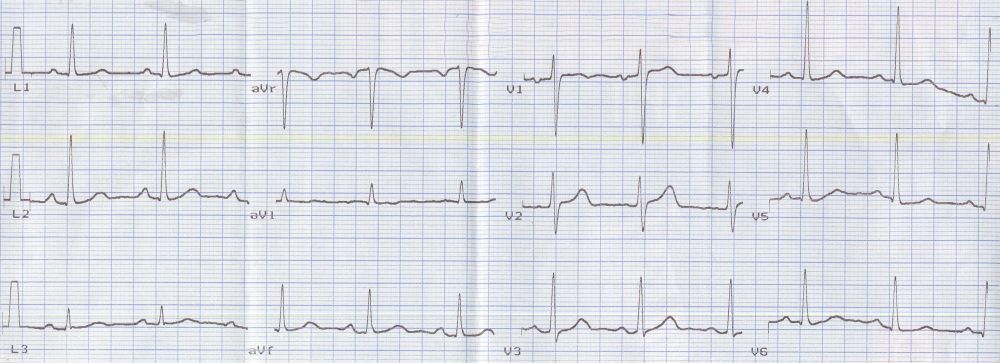Electrocardiogram (ECG)
Electrocardiogram (ECG)
The modern electrocardiograph was invented more than a hundred years ago. An electrocardiograph records the electrical activity of the heart from the surface of the body and the recording is known as an electrocardiogram (ECG). It is one of the simplest and widely available investigations to assess the heart. ECG is an important part of cardiac evaluation, especially in the emergency room when the patient presents with chest pain. In spite of the availability of many modern high tech investigations, the role of a simple ECG in the diagnosis of acute myocardial infarction (heart attack) still holds good.

Normal ECG
An ECG machine has several electrodes (leads) to collect the electrical signals from the body and an amplifier to magnify the signals. The signals are then fed to a strip chart recorder which records the electrical signals on a moving graph paper known as ECG paper. Simple ECG machines record only one channel at a time and are known as single channel ECG machines.
Sophisticated machines can simultaneously record 3, 6 or even 12 channels. Conventional single channel ECG paper has a width of 5 cm and a recording area width of 4 cm. The paper moves at a speed of 25 mm/sec. The paper has a heat sensitive coating which is marked by a heated stylus for the recording. The recording stylus is attached to a moving coil galvanometer and movement of the stylus corresponds to the instantaneous voltage detected by the galvanometer.



